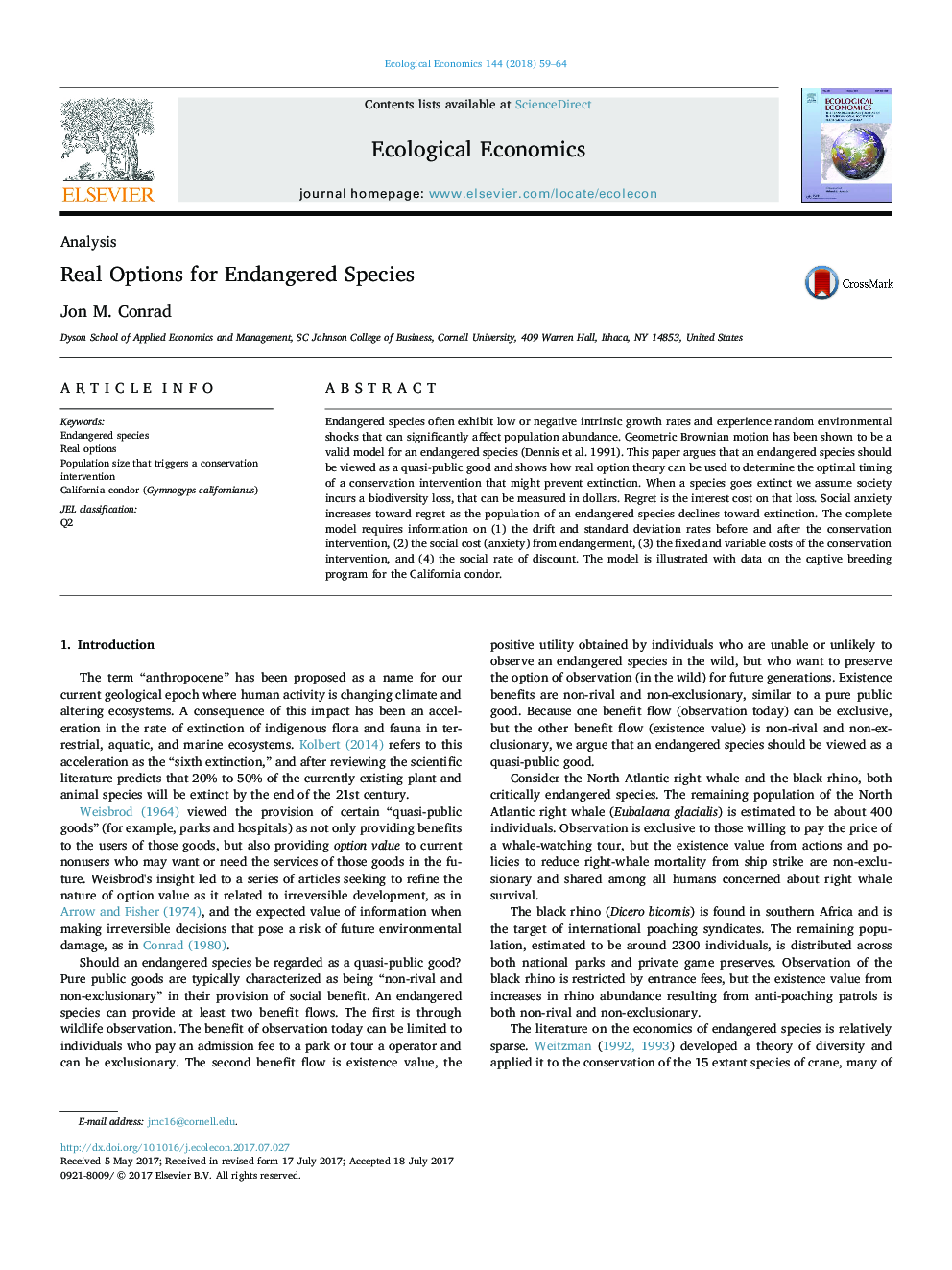| Article ID | Journal | Published Year | Pages | File Type |
|---|---|---|---|---|
| 5048505 | Ecological Economics | 2018 | 6 Pages |
Endangered species often exhibit low or negative intrinsic growth rates and experience random environmental shocks that can significantly affect population abundance. Geometric Brownian motion has been shown to be a valid model for an endangered species (Dennis et al. 1991). This paper argues that an endangered species should be viewed as a quasi-public good and shows how real option theory can be used to determine the optimal timing of a conservation intervention that might prevent extinction. When a species goes extinct we assume society incurs a biodiversity loss, that can be measured in dollars. Regret is the interest cost on that loss. Social anxiety increases toward regret as the population of an endangered species declines toward extinction. The complete model requires information on (1) the drift and standard deviation rates before and after the conservation intervention, (2) the social cost (anxiety) from endangerment, (3) the fixed and variable costs of the conservation intervention, and (4) the social rate of discount. The model is illustrated with data on the captive breeding program for the California condor.
